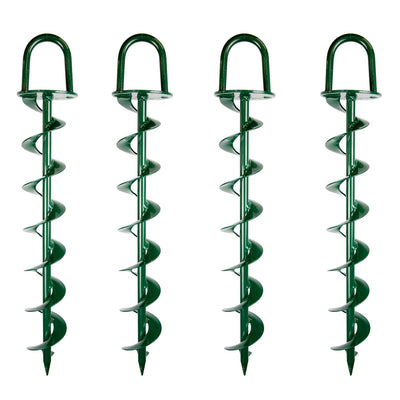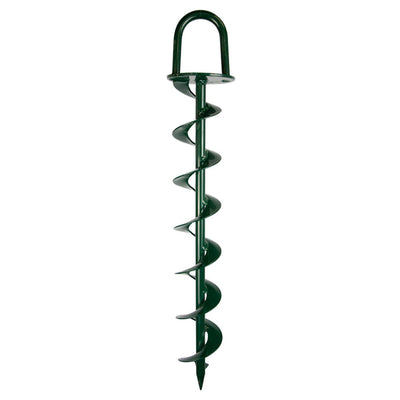The Mechanics of a High-Performance Ground Anchor System
The Mechanics of a High-Performance Ground Anchor System
Blog Article
Check Out the Different Kinds of Ground Anchor for Your Following Project
From auger anchors, which excel in diverse soil conditions, to stake anchors developed for short-lived setups, the options are countless. Furthermore, concrete and screw anchors present special benefits in particular scenarios, while deadman supports are customized for applications requiring resistance to lateral forces.

Auger Anchors
Auger anchors are a prominent selection in different building and landscaping projects due to their one-of-a-kind design and efficient securing abilities. These anchors contain a helical screw-like shaft that is driven into the ground, enabling a steady and secure hold. The spiral design assists in simple installment and optimizes resistance versus side pressures, making auger supports specifically efficient in applications such as fencing, temporary structures, and disintegration control.
The setup procedure of auger supports is fairly straightforward. They can be manually or mechanically mounted, relying on the size and required deepness. This adaptability enables for their usage in varied soil problems, from sandy to clayey terrains. Auger supports can be quickly eliminated and reused, which includes to their cost-effectiveness and sustainability.
Among the significant benefits of auger supports is their capability to disperse loads uniformly throughout the bordering dirt, minimizing the threat of dirt disturbance and minimizing environmental impact. In addition, they are less vulnerable to heaving or loosening gradually contrasted to traditional anchoring methods. Consequently, auger supports are a superb option for tasks calling for trustworthy and resilient anchoring options.

Stake Anchors
When it involves safeguarding structures in a selection of outdoor applications, stake anchors supply a dependable and uncomplicated option. These anchors are typically built from long lasting materials such as steel or light weight aluminum, developed to endure environmental tensions while offering optimum security. Their easy style allows for fast setup, making them a perfect choice for momentary or permanent anchoring requirements.
Stake anchors are specifically beneficial in safeguarding outdoors tents, canopies, and various other light-weight frameworks versus wind and weather. They function by being driven into the ground at an angle, producing a strong hold that resists pull-out pressures - Ground Anchor. The efficiency of risk supports depends upon numerous factors, including soil kind, moisture web content, and the angle of installation
For added safety, many stake anchors include accessory points for straps or ropes, enabling stress changes as needed. In applications such as landscape design or building and construction, they can properly stabilize equipment or structures on unequal surface. In general, stake anchors supply a flexible and cost-effective remedy for safeguarding various outdoor setups, making them a preferred option for professionals and do it yourself enthusiasts alike.
Concrete Anchors
Concrete supports supply a robust option for protecting structures to concrete surfaces, making certain stability and safety and security in different applications. These anchors are necessary for jobs ranging from residential buildings to large industrial installations. They can be found in different kinds, consisting of expansion anchors, glue supports, and undercut anchors, each made for specific tons needs and environmental conditions.
When mounted,Growth supports depend on mechanical systems to grip the concrete. They are perfect for tool to durable applications. Adhesive anchors make use of high-strength epoxy or material to bond the support to the concrete, using remarkable load-bearing abilities, particularly in cracked concrete situations. Undercut anchors develop a special shape within the concrete, providing exceptional holding power, especially in applications where tensile tons prevail.
When carried out properly, concrete anchors dramatically improve the architectural integrity of numerous tasks, making them crucial in contemporary building methods. Comprehending the particular needs of your project will assist in choosing the ideal type of concrete support for the task.
Screw Anchors

Screw anchors are a functional attaching service that can be efficiently news employed in a selection of applications where standard concrete anchors might not be adequate. These supports include a helical layout that permits them to be conveniently driven right into the ground, making them optimal for usage in soil and other substratums. Their distinct structure offers excellent holding power and resistance to pull-out pressures, making them suitable for countless jobs, from landscaping to structural assistance.
Among the primary advantages of screw supports is their convenience of installment. They require minimal devices and can commonly be set up without the requirement for excavation, which conserves both time and labor prices. Furthermore, screw supports can be eliminated and reused, offering a sustainable solution for short-term applications.
Screw supports are specifically valuable in locations where dirt conditions are testing, such as sandy or loosened soils. Their ability to be installed at differing midsts permits modification based on particular project requirements. Overall, screw anchors supply a reliable and trusted anchoring method, making them an outstanding selection for designers and contractors seeking efficient services for their tasks.
Deadman Anchors
Deadman supports work as a durable service for stabilizing frameworks in difficult problems, specifically where conventional anchoring techniques might fall short. These supports are composed of big, hefty items buried underground, which produce resistance versus side pressures. The design usually includes a straight component, such as a block of concrete or a metal plate, buried in the soil, to which cords or straps are affixed.
The performance of deadman anchors hinges on their ability to disperse loads over a larger area, decreasing More Help the threat of failing in unsteady More hints dirt problems. They are especially valuable in applications such as maintaining walls, momentary frameworks, and slope stablizing, where dirt activity can jeopardize the stability of the structure.
Installment of deadman anchors calls for careful planning to ensure they are positioned at the right depth and alignment, optimizing their load-bearing ability. While they might need more labor and material than lightweight supports, their integrity in adverse conditions makes them vital for long-lasting tasks. Deadman supports are functional and can be adapted to various applications, making them a go-to choice for designers encountering distinct difficulties in their projects.
Verdict
In summary, picking the ideal kind of ground support is vital for ensuring security and protection in different jobs. Auger supports excel in diverse soil problems, while risk anchors suit short-lived applications. For concrete surfaces, development and sticky anchors provide trustworthy choices, and screw supports use adaptability in difficult terrains. Deadman supports are particularly efficient in standing up to lateral forces for retaining wall surfaces. Mindful factor to consider of these options will certainly boost task results and architectural honesty.
In addition, concrete and screw anchors existing one-of-a-kind advantages in details scenarios, while deadman supports are customized for applications calling for resistance to side pressures - Ground Anchor.Auger anchors are a preferred selection in numerous building and landscape design projects due to their distinct layout and effective securing abilities. They come in different kinds, consisting of development supports, sticky supports, and undercut supports, each developed for particular tons requirements and environmental conditions
Glue anchors make use of high-strength epoxy or material to bond the anchor to the concrete, using remarkable load-bearing capacities, particularly in fractured concrete scenarios. Generally, screw supports provide a reputable and effective anchoring technique, making them an exceptional option for contractors and designers seeking efficient options for their projects.
Report this page